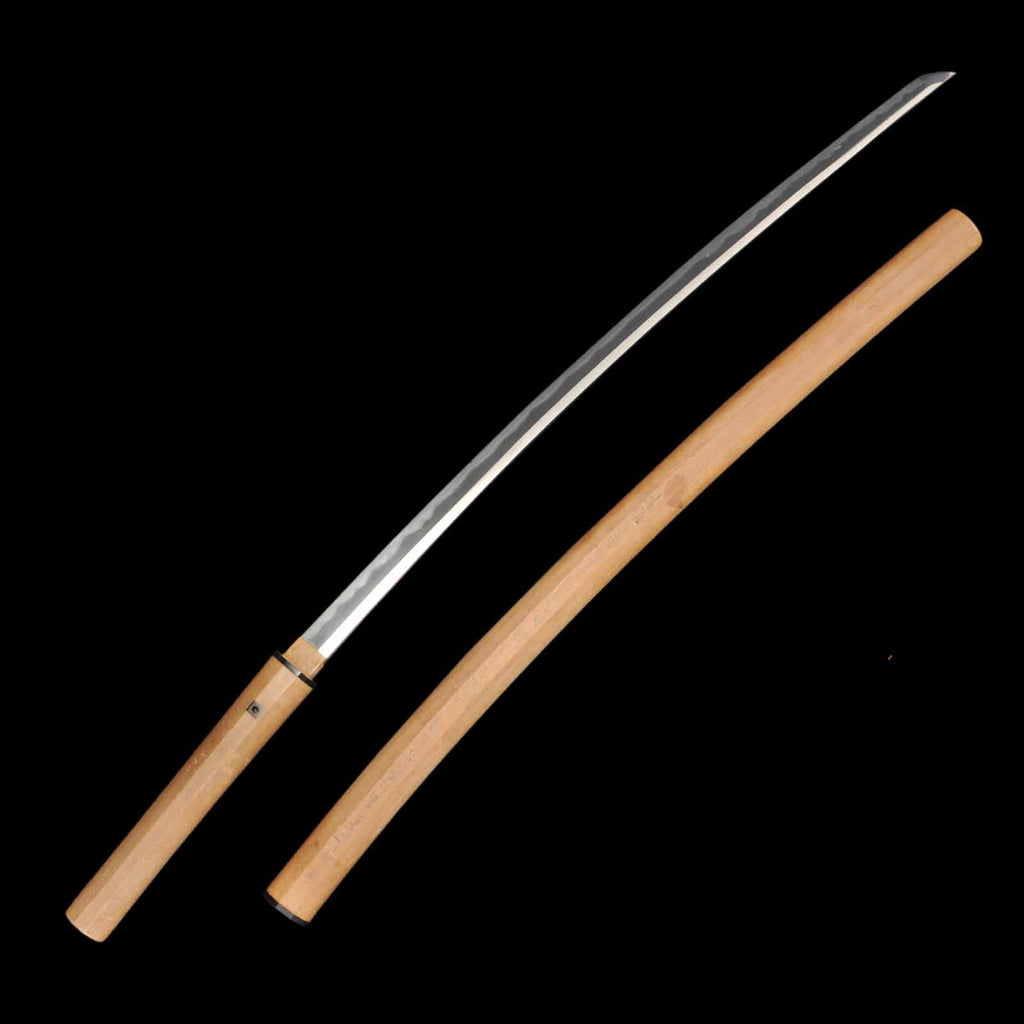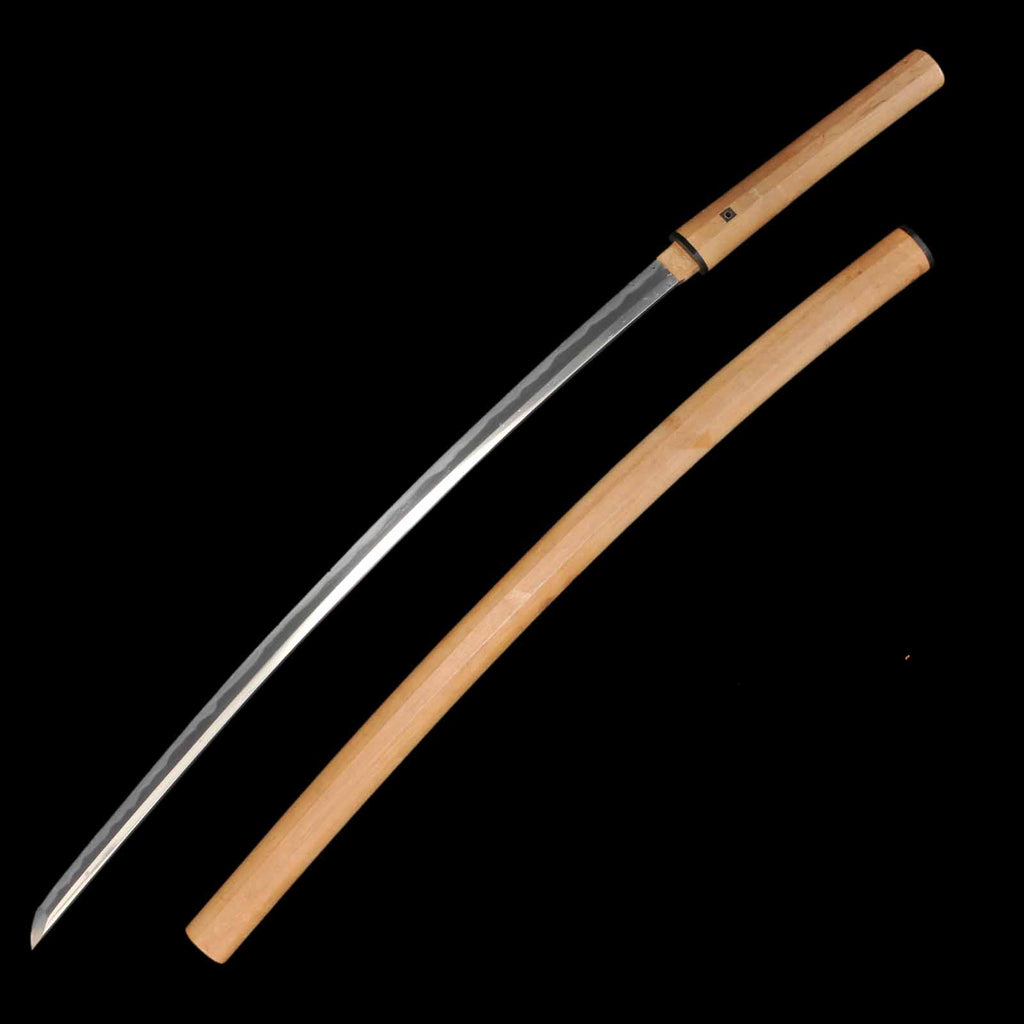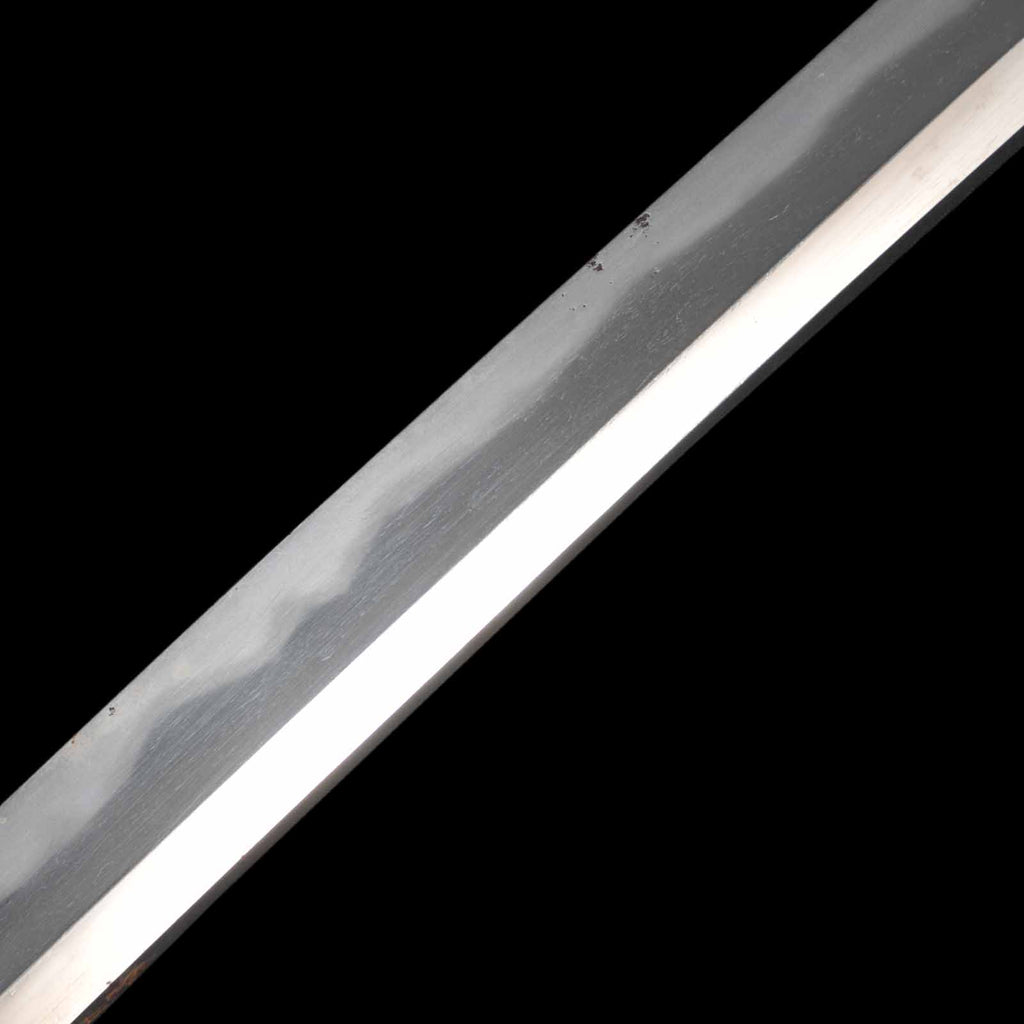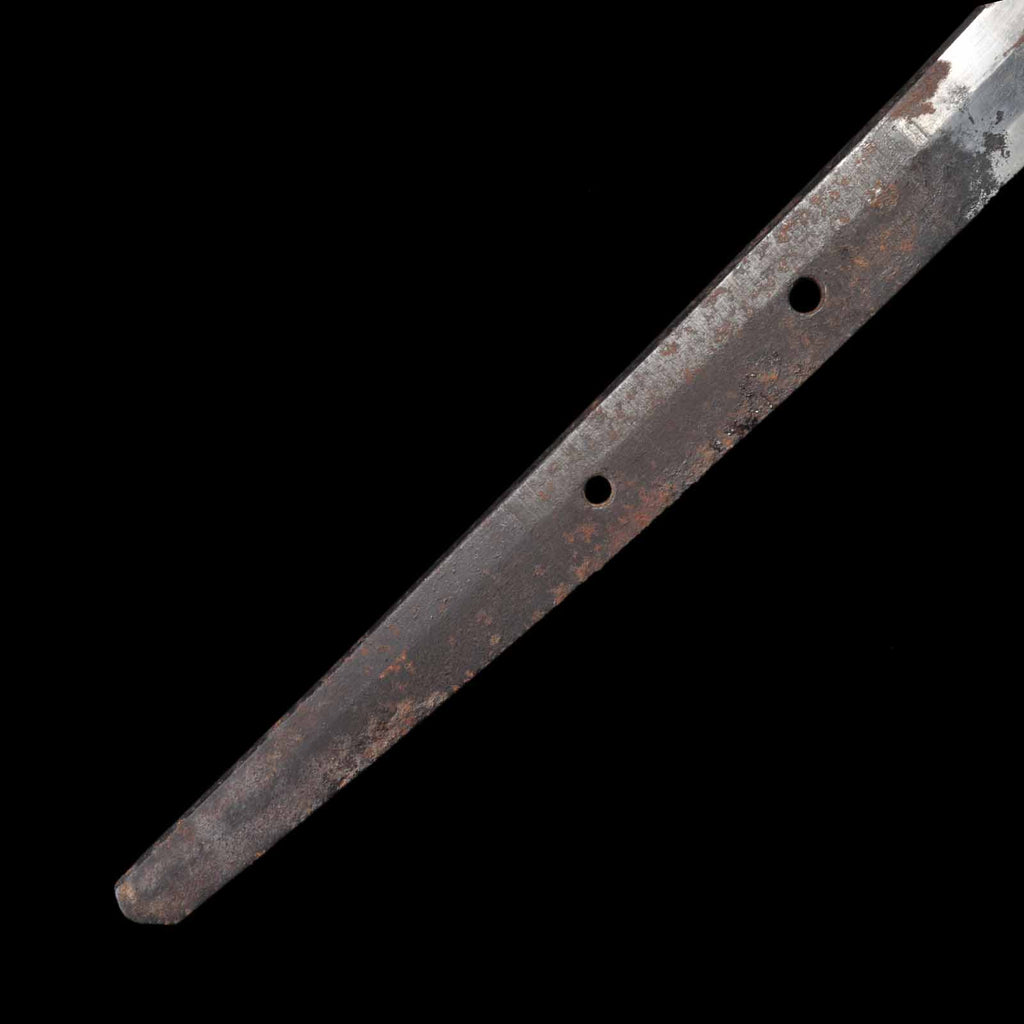Katana - Kunisuke - Shirasaya Koshirae - Ubu Nakago - Shinto Era - Kochi 16323
This piece is a katana engraved with the name Kawachinokami Kunisuke. Unfortunately, there are chips and rust on the blade, which is why we are offering it at a very bargain price.
The condition of the blade is by no means excellent, but it is polished well enough to appreciate the hada and hamon. The hada is itame and chikei is well visible. Niedeki hamon is gunome-like midare with notare mixed in. The hataraki, such as ashi and yo, are also active. One flaw is a 2 mm hakobore ( chipped blade) at about 36 cm from the kissaki. There are also chips at about 9 cm and 21 cm from the same point. The presence of these chips on the upper half of the blade means that there is no denying that this katana may have been used in actual combat.
There is also a fukure-like flaw on the sashiomote side about 12 cm from the kissaki. There are also traces of umegane on a spot about 27 centimeters from the kissaki on the sashiomote side. There are two spots of black rust about 20 cm from the habakimoto. There are also three spots of black rust on the sashiura side that stand out against the habakimoto. There is a 6 cm long band of rust on the mine near the habaki. The name "Kawachinokami, Fujiwara, and Kunisuke" is engraved on the nakago.
Kawachi Kunisuke is known as the founder of Osaka Shinto, along with the first Izuminokami Kunisada. He first made katanas as a swordsmith in the service of Seki Kazumasa, the lord of Kameyama Castle in present-day Mie Prefecture, but when the Seki clan fell, he moved to Kyoto and became an apprentice of Horikawa Kunihiro, who was active in the early days of Shinto. Later, when Kunihiro passed away, he became a disciple of his brother Echigonokami Kunitomo, and in 1630 became independent and moved to Osaka. He then founded a movement known as the Osaka Shinto and became active in it.
Koshirae is shirasaya. The habaki is a kihabaki, which is an integral part of the tsuka of the shirasaya. On the scabbard, there is a faint writing of the name of Yokoyama Eikichi, a Tosa Clan samurai active at the end of the Edo shogunate, but the connection to this katana is unclear. The koiguchi and mekugi are made of buffalo horn.
Those interested in katanas that have actually been used as witnesses to Japanese history, rather than those that have been kept for viewing purposes, should definitely add this bargain katana to their collection!
- Blade length: 70.8 cm
- Curvature: 1.9 cm
- Number of Mekugi hole: 1
- Sakihaba: 18.0 mm
- Sakikasane: 4.6 mm
- Motohaba: 27.4 mm
- Motokasane: 6.3 mm
- Signature: Kawachi-no-kami Fujiwara Kunisuke
- Era: Shinto
- Structure: Shinogi-zukuri, Iori-mune
- Jigane: Itame
- Hamon: Midare
- Boshi: Midarekonde Nakamaru ni Kaeru
- Weight(blade only): 630 g
- Nakago: Ubu
- Koshirae: Shirasaya
- Original Registration No.: Kochi 16323
Please contact us if the katana you are looking for is not listed here.






























